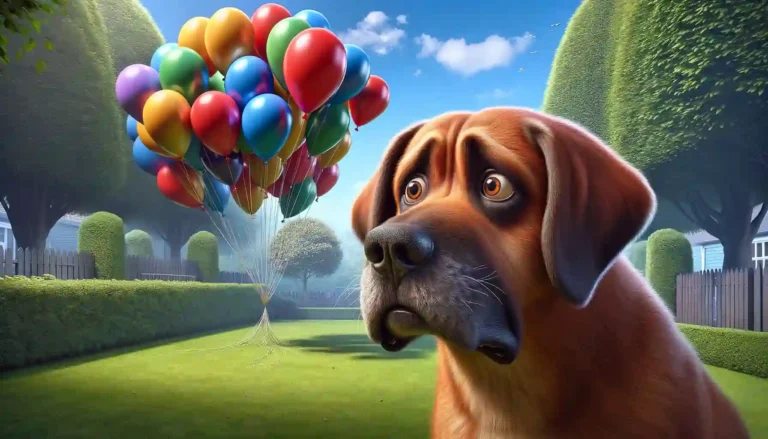Introduction
Have you ever wondered, why your dog react balloons? Prepare yourself for a quick dive into the fascinating world of dog quirks. From sensory surprises to unexpected fears, this blog reveals the secret behind your pup’s ballooning blues. Are you ready for a short and sweet trip into your dog’s world? let’s Roll!
The Perspective of Dogs on Balloons
1. Sensory Experience: Sound, Sight, and Smell
Dogs perceive their environment differently. Balloons, with their unique textures and sounds, present a sensory challenge. The loud noise that occurs when something explodes can be particularly startling, similar to other sudden loud sounds that can alarm humans.
2. Balloons and the Surprise Element
Irregular movements of floating objects can trigger inherent caution in the dog. This reaction arises from their innate defense mechanism, which has evolved to protect them from potential threats.
Common Causes of Balloon Phobia in Dogs
1. Past Trauma and Negative Experiences
Negative experiences, such as a frightening encounter with a bursting balloon, can lead to long-lasting fear. This fear can become deeply rooted, especially if the experience was traumatic.
2. Lack of Exposure and Socialization
Insufficient exposure to different objects and experiences during early development may result in increased fear of unfamiliar objects such as balloons. Early socialization is important for a puppy to grow into a confident adult dog.
3. Personal Nature and Sensitivity
Like humans, dogs also have different personalities. Some people may be naturally more alert or sensitive, making them more susceptible to fear to unfamiliar stimuli.
Balloons and Safety Concerns
1. Physical Hazards – Risks of Suffocation and Swallowing
Balloons present real physical risks. Ingesting pieces of a popped balloon can cause suffocation or intestinal blockage, which are serious health concerns.
2. Psychological effects – stress and anxiety
Ongoing anxiety around certain objects can have an impact on the dog’s overall health. Chronic stress can lead to various behavioral and health problems.
3. Balloon Types and Safe Alternatives
Although some balloons are less likely to burst suddenly, they still pose a risk of swallowing. Providing safe, dog-friendly play equipment is a better option.
Recognizing Fear in Your Dog
1. Signs and Symptoms of Fear and Anxiety
It is important to recognize fear-related behaviors. These may include various actions, such as trembling, excessive barking or trying to hide.

2. When to Seek Professional Help
Distress or changes in behavior due to severe phobia require professional counseling. A veterinarian or animal behavior specialist can provide valuable advice and assistance.
Helping Your Dog Overcome His Fear of Balloons
1. Creating a Safe and Comfortable Environment
A safe environment at home is important. This means maintaining a space free from things that cause fear.
2. Desensitization and Counterconditioning Techniques
Carefully exposing a pet to the source of its fear, along with positive reinforcement, can help reduce phobic reactions.
2. Positive Reinforcement and Reward-Based Training
Encouraging and rewarding calm behavior is effective. The use of treats and affection reinforces positive associations.
Game and Balance Act: Striking the Right Note
1. Understanding Why Some Dogs Like Balloons
Some pets find balloons attractive because of their unique activity and challenge of play.

2. Encouraging Healthy Conversations with Balloons
Supervision is important for pets who enjoy balloons. Monitoring conversations ensures security.
Conclusion
In raising our beloved pets, it is essential to recognize and address their fears. Understanding their discomfort with balloons enables us to create a supportive environment. Responsible pet ownership involves acknowledging and responding to these personal fears. Let’s spread the love and joy of caring for your pets – share your experiences and insights with others! 🐾💙 #petlove #sharethejoy

